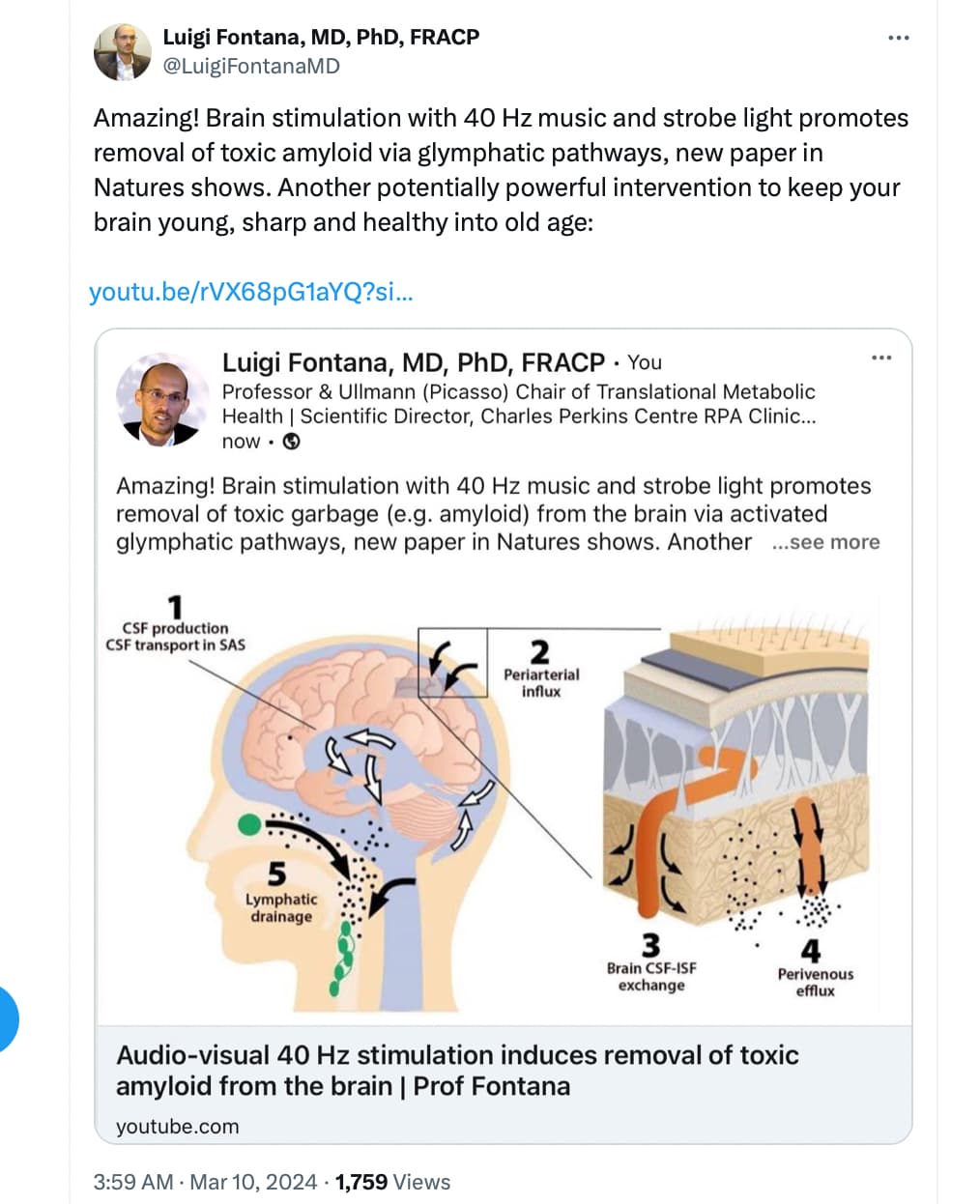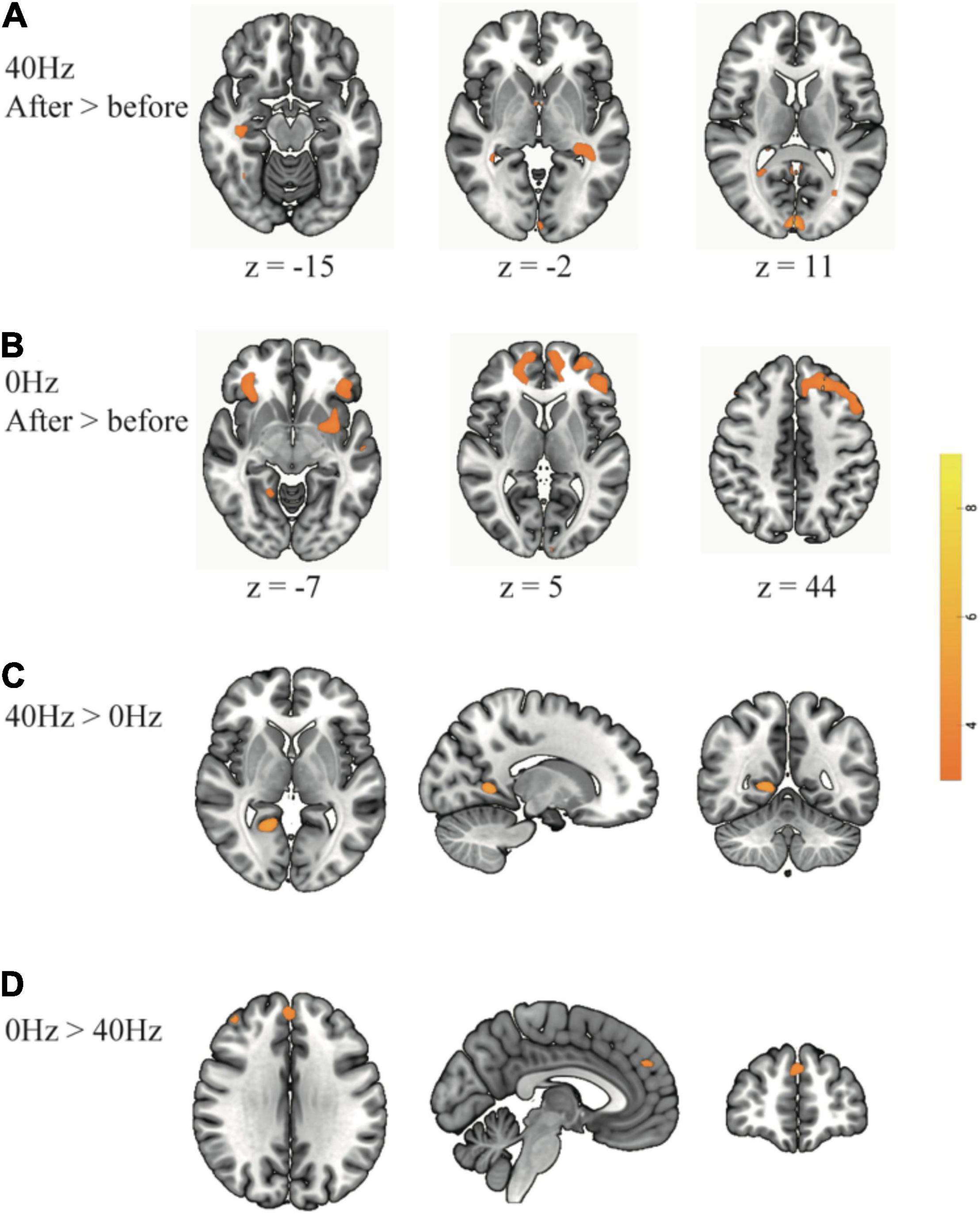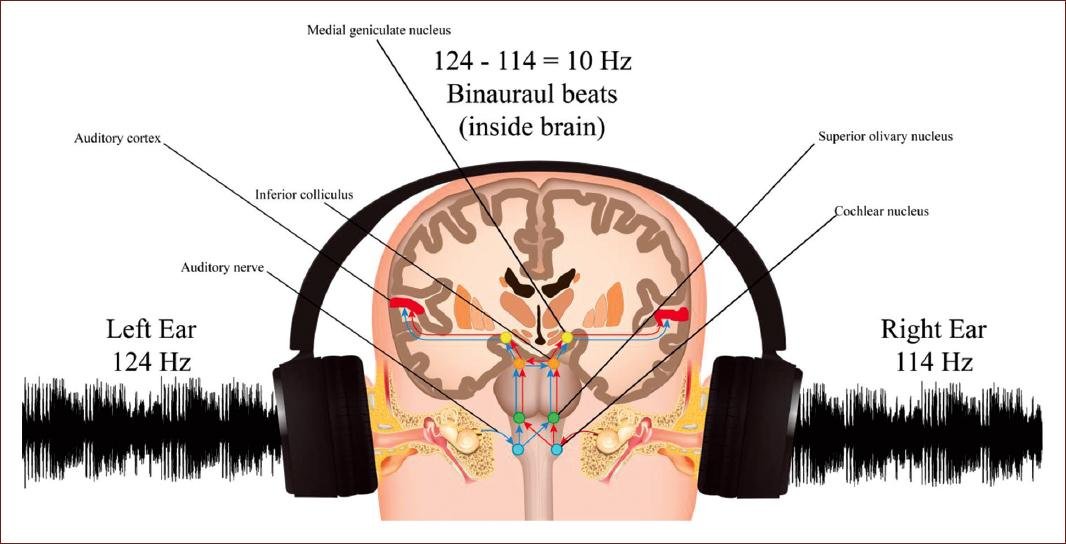40Hz Brain Entrainment Effectiveness: Unlocking Cognitive and Emotional Benefits
When it comes to enhancing cognitive function, improving mood, and even slowing the progression of neurodegenerative diseases, **40Hz brain entrainment** is emerging as a potential game-changer. In this article, we’ll delve into the science behind this innovative therapy, explore its benefits, and discuss its limitations. Whether you’re interested in **neurostimulation devices** or simply want to improve your brain wellness, understanding the effectiveness of **40Hz brain entrainment** could be a crucial step toward optimizing your cognitive health.
What is 40Hz Brain Entrainment?
40Hz brain entrainment refers to the use of rhythmic sensory stimulation, such as light, sound, or tactile vibrations, to synchronize brain activity within the **gamma frequency range** (around 40Hz). This technique is designed to induce a phenomenon called **neural entrainment**, where brainwaves are “entrained” or synchronized to match the frequency of the external stimulus. Studies have shown that gamma oscillations in the brain are linked to higher-order cognitive processes such as **learning**, **memory**, and **attention**.
While 40Hz is a specific frequency, it has been selected because of its connection to cognitive improvement and its potential to slow the progression of **neurodegenerative diseases** like **Alzheimer’s**. By harnessing this frequency with **non-invasive technologies**, people can enhance brain function without the need for pharmaceutical intervention.
Key Findings from Research on 40Hz Brain Entrainment
Cognitive and Emotional Benefits:
One of the most exciting aspects of **40Hz brain entrainment** is its potential for improving mood and cognition. A study involving medical students exposed to **40Hz binaural beats** (BB) found significant improvements in both mood and cognitive performance. Students reported reduced negative emotions, increased positive emotions, and better results on cognitive tests. Interestingly, the effects varied between genders: females showed greater emotional benefits, while males experienced more significant cognitive improvements. This could indicate that **40Hz brain entrainment** may offer personalized benefits depending on individual characteristics.
Working Memory Enhancement:
Another crucial finding from research is the effect of **40Hz auditory stimulation** on **working memory**. A study conducted on healthy adults showed that just 20 minutes of exposure to **40Hz binaural beats** led to improved word recall, a key measure of working memory. The mechanism behind this effect appears to involve the induction of both **gamma** and **beta brain oscillations**, which are associated with enhanced cognitive processing. Whether you’re a student, a professional, or simply someone looking to boost your memory capacity, incorporating 40Hz brain entrainment into your routine may provide a tangible benefit.
Neurological and Clinical Effects
Impact on Alzheimer’s Disease and Brain Health:
Perhaps one of the most promising aspects of **40Hz brain entrainment** is its potential to **slow the progression of Alzheimer’s disease**. Research from MIT and other institutions has shown that **gamma stimulation** (at 40Hz) can reduce **amyloid plaques** and **tau protein buildup**, which are characteristic of Alzheimer’s pathology. In animal models, these effects have led to the prevention of neuron death, along with sustained memory and cognitive function. This research provides hope for **non-invasive therapies** that could slow or even reverse the damaging effects of Alzheimer’s.

Human Studies and Clinical Trials:
Human studies have also shown positive results. Clinical trials with **40Hz audiovisual stimulation** have demonstrated that it is safe, well-tolerated, and can lead to measurable improvements in **sleep quality**, **functional abilities**, and **brain atrophy** in patients with **mild cognitive impairment (MCI)** or Alzheimer’s disease. Participants who engaged in daily 40Hz stimulation for several months reported improvements in **memory**, **sleep**, and **daily activity rhythms**. These studies suggest that 40Hz brain entrainment may play a key role in managing symptoms of cognitive decline and preserving quality of life for individuals with Alzheimer’s and similar conditions.

Mechanisms Behind 40Hz Brain Entrainment
But how does **40Hz brain entrainment** work at the biological level? The primary mechanism behind its effectiveness lies in its ability to enhance **neural communication**. Exposure to **40Hz stimulation** has been shown to promote the clearance of **amyloid proteins**, a key factor in Alzheimer’s pathology. It also improves **synaptic function**, helping neurons communicate more efficiently. This is particularly important because poor synaptic function can lead to cognitive decline and mental fatigue.
Additionally, 40Hz brain entrainment activates **microglia** and **astrocytes**, the brain’s immune cells, which are responsible for clearing harmful proteins from the brain. This enhanced activity can help reduce the buildup of toxic substances that contribute to neurodegenerative diseases. Essentially, **40Hz stimulation** supports the brain’s natural cleanup process, leading to better brain health and cognitive function.
Limitations and Challenges of 40Hz Brain Entrainment
While the benefits of **40Hz brain entrainment** are promising, there are also limitations to consider. Not all studies have shown significant effects, and some animal research has reported no reduction in **amyloid levels** with **40Hz stimulation**. Variability in **experimental design**, **individual differences**, and the **stimulation parameters** used in studies can all influence the outcomes. For instance, factors such as the duration of exposure, the method of stimulation (light, sound, or tactile), and individual brain characteristics can all impact the effectiveness of 40Hz brain entrainment.
Need for Further Research:
In addition to these challenges, more research is needed to refine the most effective protocols for **40Hz brain entrainment** and to confirm the long-term benefits of this treatment across diverse populations. For instance, researchers are still investigating how **40Hz stimulation** affects different types of cognitive functions and whether the benefits are sustained over time.

Conclusion
In conclusion, **40Hz brain entrainment** is an exciting area of research with significant potential for improving **mood**, **cognitive function**, and **brain health**, particularly for individuals with neurodegenerative conditions like Alzheimer’s. While the early findings are promising, it’s clear that more research is needed to fully understand the long-term effects of 40Hz stimulation. As we continue to explore non-invasive ways to enhance brain wellness, **40Hz brain entrainment** may prove to be one of the most effective and accessible options available.
For those looking to explore non-invasive **neurostimulation devices**, it’s important to consider options that incorporate **40Hz brain entrainment** for enhanced brain health. Devices like **NeuroVIZR** and others may offer practical solutions to integrate these therapies into your daily routine.
Stay tuned for more insights and in-depth reviews on **neurostimulation technologies** here at NeuroTechInsider.com.
Exploring the Potential of 40Hz Brain Entrainment for Cognitive Health
As we continue to explore non-invasive therapies for improving brain function, **40Hz brain entrainment** emerges as a leading candidate for enhancing cognitive performance and emotional regulation. The promise of this technology, particularly for people experiencing cognitive decline or those looking for an edge in mental clarity and focus, is truly exciting. But how exactly can this **neurostimulation** benefit you? Let’s dive deeper into its implications and potential applications.
Practical Applications of 40Hz Brain Entrainment
While **40Hz brain entrainment** holds significant promise for cognitive and emotional health, its practical applications are diverse. Below, we explore some of the key areas where this technology is making a tangible impact:
- Alzheimer’s Disease and Dementia: Clinical trials suggest that **40Hz stimulation** may slow down the progression of Alzheimer’s by reducing toxic **amyloid plaques** and improving cognitive function. For individuals already diagnosed with Alzheimer’s or **mild cognitive impairment (MCI)**, integrating **40Hz brain entrainment** into daily therapy may help maintain cognitive function longer.
- Sleep and Circadian Rhythms: Another exciting use of **40Hz brain entrainment** is its potential for improving **sleep quality**. Studies have indicated that exposure to **40Hz audiovisual stimulation** can help synchronize circadian rhythms, leading to improved sleep patterns and overall restfulness. If you’re struggling with insomnia or **circadian misalignment**, this could be the solution you’ve been searching for.
- Anxiety and Stress Reduction: Individuals dealing with **chronic anxiety** or **stress** may also benefit from **40Hz stimulation**. Research suggests that gamma oscillations, stimulated by 40Hz entrainment, can help regulate emotional processing and reduce feelings of anxiety, leading to better emotional balance and stress relief.
- Enhancing Focus and Mental Clarity: For those suffering from **cognitive fatigue** or **brain fog**, **40Hz brain entrainment** has shown to improve working memory and increase focus, making it an ideal option for students, professionals, or anyone looking to boost their mental performance.
Device Options for 40Hz Brain Entrainment
While 40Hz brain entrainment is still relatively new, several **neurostimulation devices** are already on the market that incorporate this technology. These devices aim to deliver **40Hz stimulation** via light, sound, or both, helping users experience its cognitive benefits in an accessible way. Let’s take a look at some of the most popular options:
- NeuroVIZR: A cutting-edge wearable designed to enhance brain function through **gamma frequency stimulation**. The device targets key brain areas associated with attention and memory, making it an excellent choice for individuals looking to improve cognitive performance.
- Apollo Neuro: While primarily focused on stress reduction and mood improvement, Apollo Neuro’s technology incorporates aspects of **40Hz stimulation** in its wearable device, providing a non-invasive solution for enhancing mental health and well-being.
- Audicin: Another wearable device offering **40Hz auditory stimulation**, Audicin aims to boost cognitive performance and improve focus by synchronizing brain activity to optimal frequency ranges.
These devices allow users to benefit from **40Hz brain entrainment** without the need for complex, expensive treatments. Whether you’re struggling with sleep issues, cognitive decline, or emotional imbalance, there is a device to fit your needs. However, before choosing one, always make sure to check out independent reviews and research to understand the full scope of each device’s effectiveness.
Frequently Asked Questions (FAQs)
What is the science behind **40Hz brain entrainment**?
**40Hz brain entrainment** works by using rhythmic sensory stimulation (such as light or sound) to synchronize the brain’s electrical activity to a frequency of 40Hz, which has been shown to be associated with cognitive functions such as learning, memory, and emotional regulation. This process, known as **neural entrainment**, can potentially help improve brain health and cognitive performance.
How can **40Hz brain entrainment** help with Alzheimer’s disease?
Research has shown that **40Hz stimulation** can reduce amyloid plaque buildup and tau protein accumulation in the brain, which are characteristic of Alzheimer’s disease. By promoting the clearance of these harmful substances, **40Hz brain entrainment** may help slow the progression of Alzheimer’s and improve cognitive function in individuals suffering from this condition.
Is **40Hz brain entrainment** safe?
Yes, clinical studies have demonstrated that **40Hz brain entrainment** via non-invasive methods (such as light and sound) is generally safe and well-tolerated. However, as with any technology, it’s important to consult with a healthcare provider if you have any existing medical conditions or are using other therapies concurrently.
Can **40Hz brain entrainment** improve sleep?
Yes, **40Hz stimulation** has been shown to help regulate **circadian rhythms**, which play a crucial role in sleep. By improving the synchronization of the brain’s natural rhythms, **40Hz brain entrainment** can lead to better sleep quality and help combat issues like insomnia and sleep deprivation.
How long does it take to see results from **40Hz brain entrainment**?
The timeline for seeing results can vary depending on the individual and the condition being addressed. Some users report improvements in mood, memory, and focus within a few weeks of using **40Hz brain entrainment**. For more significant cognitive benefits, especially for conditions like Alzheimer’s or **mild cognitive impairment**, consistent use over several months may be necessary to see noticeable results.
Conclusion
In summary, **40Hz brain entrainment** is an innovative and promising therapy that offers numerous benefits for cognitive health and emotional well-being. Whether you’re looking to boost your brain’s performance, manage stress, or slow the progression of Alzheimer’s, the science behind 40Hz stimulation provides compelling evidence for its effectiveness. With the growing availability of wearable devices that offer this technology, more people can now access the potential benefits of 40Hz brain entrainment in the comfort of their own homes.
As research continues to evolve, it’s likely that **40Hz brain entrainment** will become an even more integral part of managing neurological health and improving mental clarity. For those interested in exploring non-invasive, science-backed solutions for better brain health, this therapy offers a potential path forward.
To explore more about **neurostimulation devices** and their effectiveness, be sure to check out our in-depth reviews and comparisons here at NeuroTechInsider.com.
https://www.scielo.org.mx/img/revistas/rmn/v22n6//2604-6180-rmn-22-6-238-gf1.jpg
